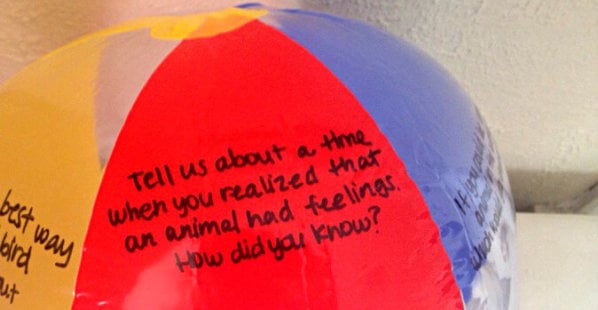Teach Compassion for Animals With Google’s 3D Animals!
Can’t sit through another movie or do one more puzzle while you’re staying in? We love this interactive way to keep your kids entertained while they learn more about animals: Meet Google’s 3D animals, which PETA recognized with an award! This new feature allows you to see virtual animals—without exploiting real animals in any way. All you have to do is search a small selection of animals (like the ones suggested below) on Google. Then in the overview section of Google’s loaded results, you’ll be given the option to see the animal in 3D or use augmented reality.

Tigers, lions, bears, and others are sometimes forced to live in cruel roadside zoos or circuses. But the animals who involuntarily live in these environments are often treated poorly, not given ample enrichment, and forced to do cruel tricks with negative reinforcement and abuse (like being whipped or tied down) in order to entertain visitors.

Google’s new 3D animals give parents a great opportunity to teach their children more about animals, including that they would never want to be confined, forced to do tricks, or taken from their natural habitats. While checking out the tiger, bear, and others, here are some great facts to share with your kids:
Tigers

In nature, tigers spend most of their time looking for prey, traveling efficiently by using a mental map of their territory. To them, hunting isn’t just for food—it’s also fulfilling and reinforces a sense of accomplishment. It releases hormones that promote positive feelings, and it improves their physical strength.
Tigers are also great swimmers and love the water. They can spend hours submerged up to the neck on a hot day, the way we would at the pool in the summer, but they can also cross a 5-mile-wide river in a matter of minutes. Wow!
You can hear a tiger’s roar from up to 2 miles away. Tiger vocalizations include roaring, growling, hissing, moaning, and chuffing.
Being forced to spend their life in a dreary roadside zoo inside a cage that’s a fraction of the size of their natural habitat suppresses a tiger’s very essence and often results in lifelong psychological trauma. ?
Bears

Among all bears, brown bears are uniquely equipped to dig for tough foods such as roots and shoots. They use their long, strong claws to dig through earth to reach the roots, which they bite through with their powerful jaws.
Brown bears are the only bears with a hump at the top of each shoulder made entirely of muscle. This allows for greater force in digging, both for foraging and den construction.
Brown bears inhabit the broadest range of habitats of any living bear species and have no altitudinal preferences—they’ve been recorded everywhere from sea level to an elevation of 16,000 feet.
Bears are highly intelligent and experience a wide range of emotions, but roadside zoos and circuses deprive them of everything that’s natural and important to them.
Lions

Lions are the most social of the big cats. Cubs learn hunting skills by playing and wrestling with others in their pride. When cubs are taken from their mothers and siblings at an early age for photo ops, to sell, or to be forced to learn tricks for the circus, they’re denied the opportunity to engage in this important natural behavior.
Big cats like lions, tigers, leopards, and jaguars have special two-piece hyoid bones in their throats that allow them to open their mouths wide and emit a fierce roar.
Ponies

Ponies are smart! They’ve shown that they can understand symbols and use them intelligently to make requests—such as for a jacket when they’re cold.
Ponies are not baby horses. Both ponies and horses are of the same species, but ponies mature more quickly than horses and stay small throughout their lives.
They’re often treated cruelly when used for pony rides or circus acts. They should never have to endure a life in which they’re deprived of water, whipped to make them do tricks, or forced to walk around in circles with someone on their back.
Wolves

It has been reported that following a loss, an entire wolf pack may howl mournfully and act depressed.
Wolves use body language to communicate status as well as playfulness, fear, and other states of mind. Their sense of smell is at least 100 times better than that of humans.
Some wolves are forced to endure a lifetime behind bars at a roadside zoo or pseudo-sanctuary and be touched by strangers or used for photo ops, which are disruptive, frightening, and dangerous not just for the animals but also for the humans involved.
*****
It’s important that we teach our little ones compassion by never taking them to a roadside zoo or a circus that uses animals. Instead, they can learn about and see animals in other ways, like by going on a nature walk, watching an animal documentary, or visiting with Google’s 3D animals!





Under 13? Ask your parents bee-fore you continue!